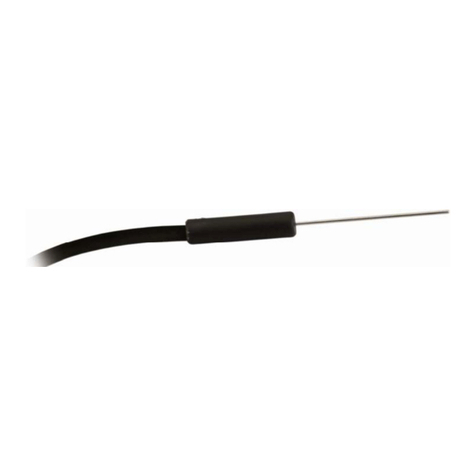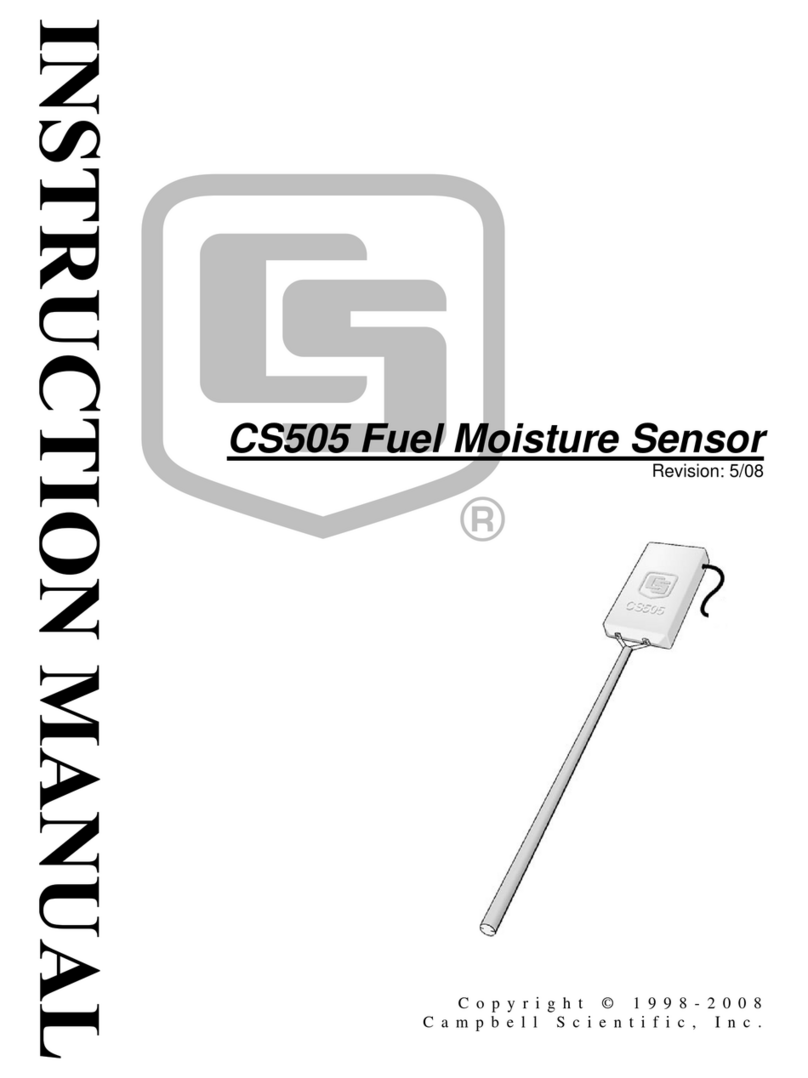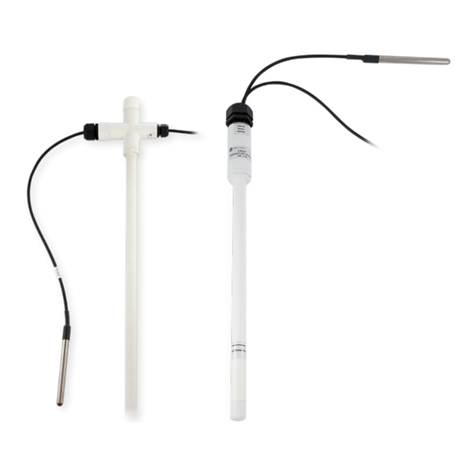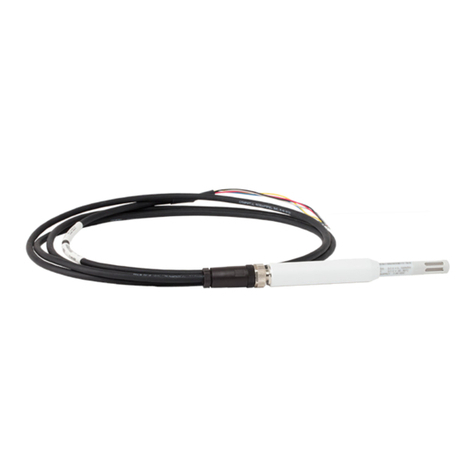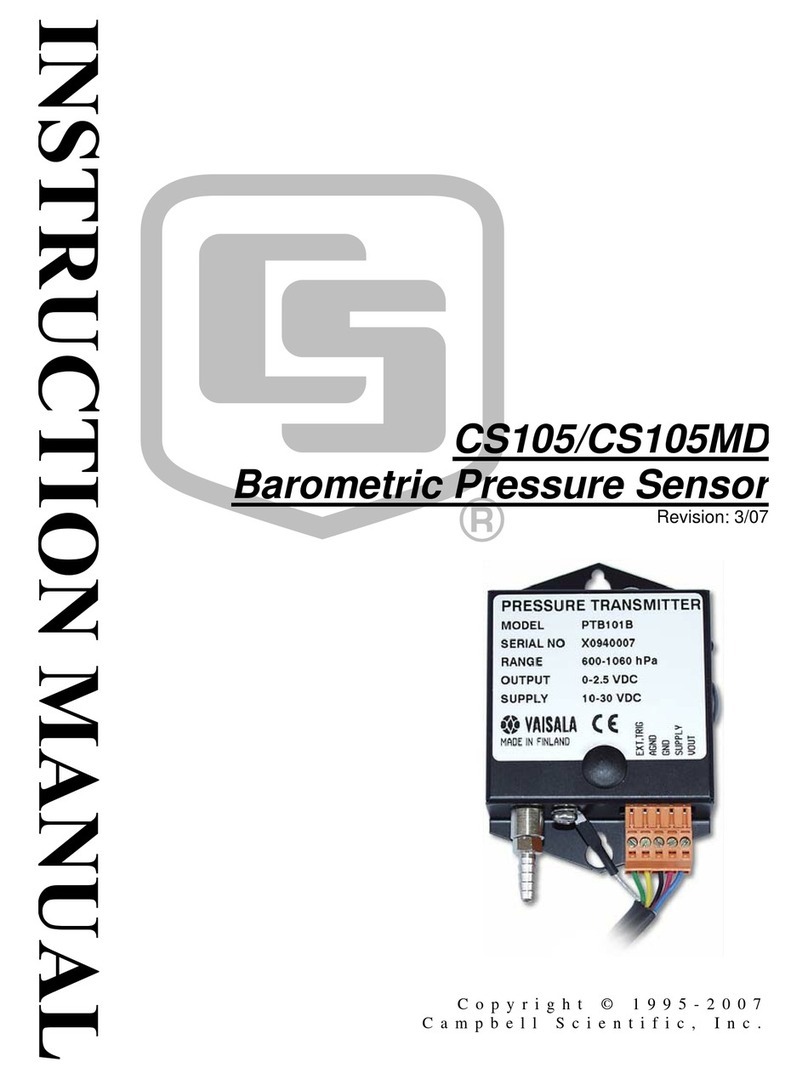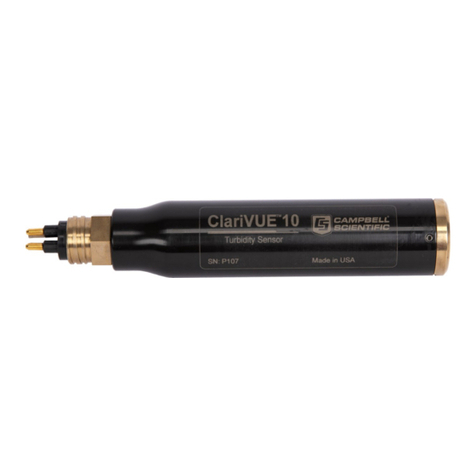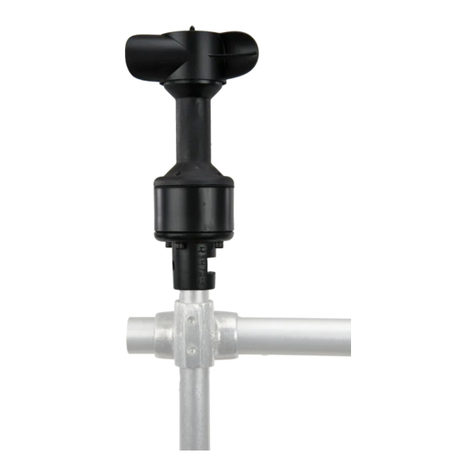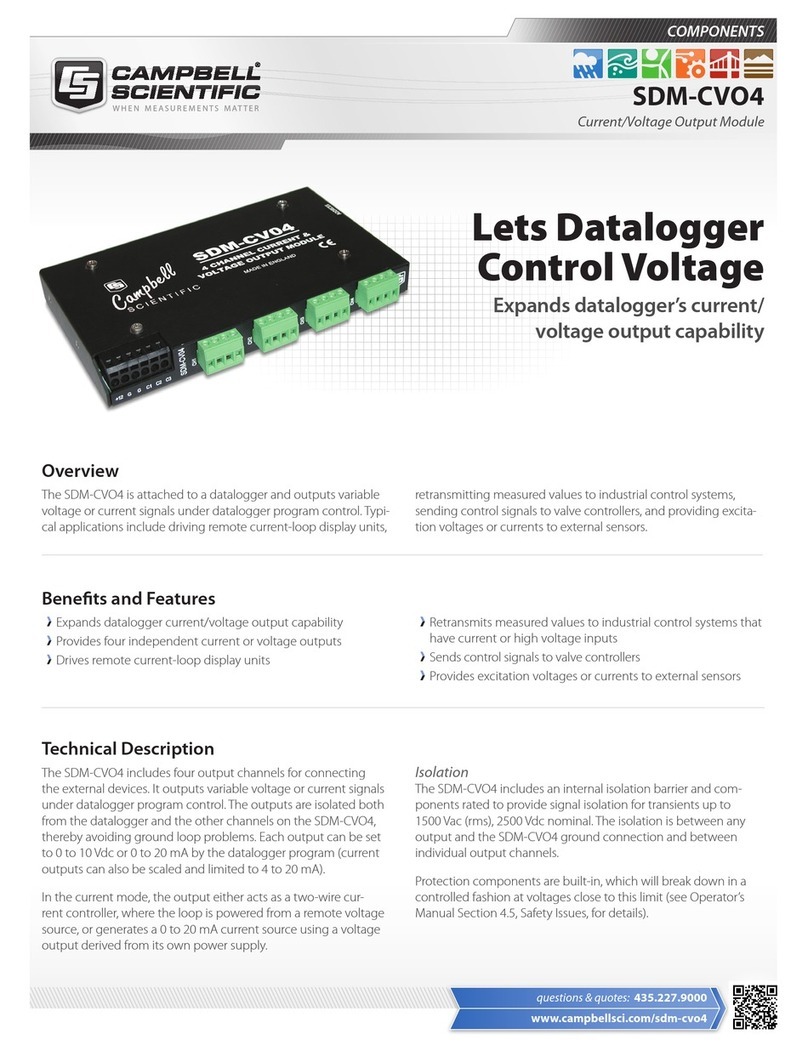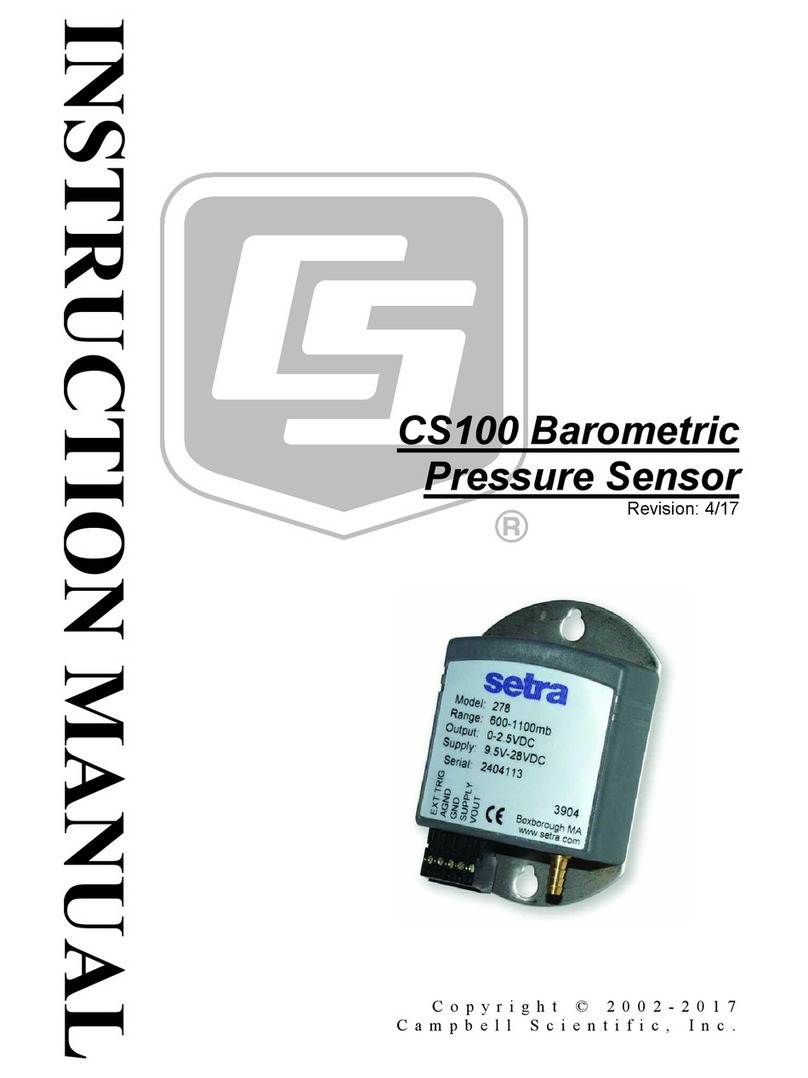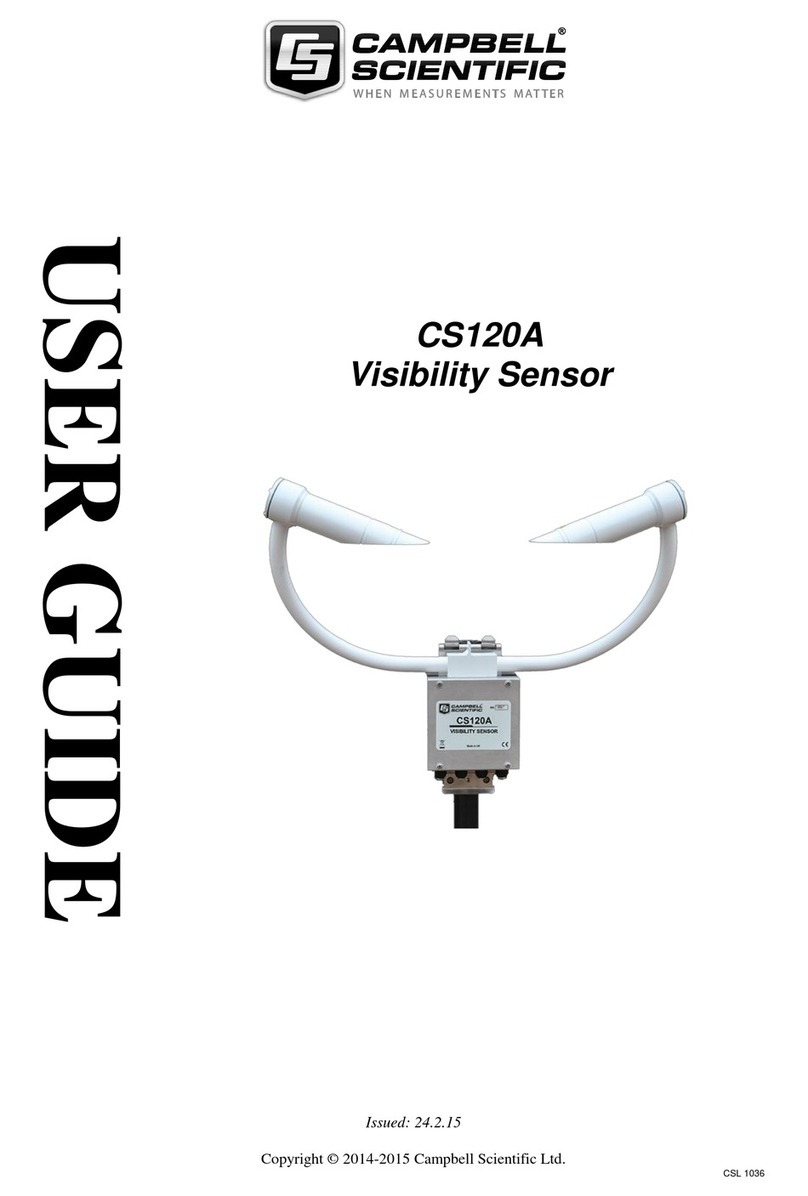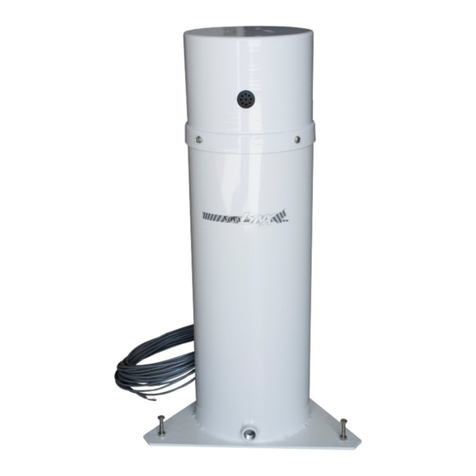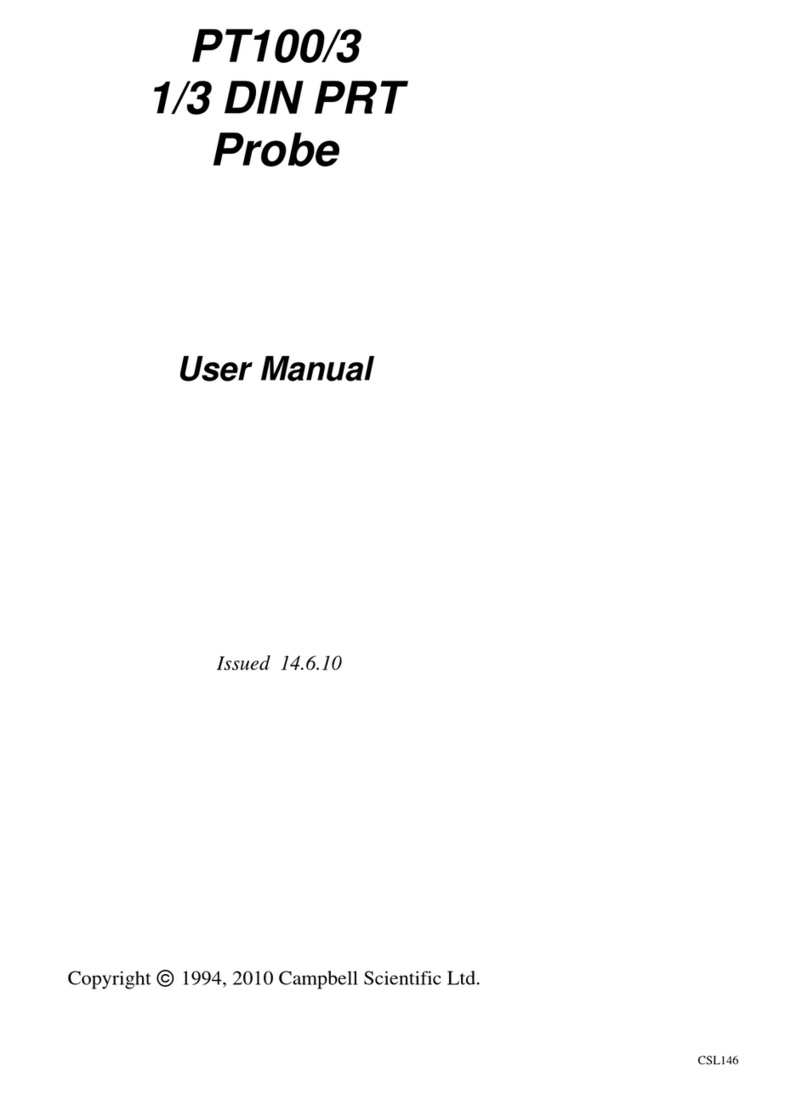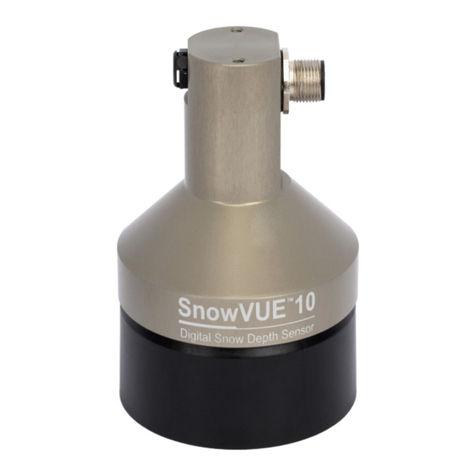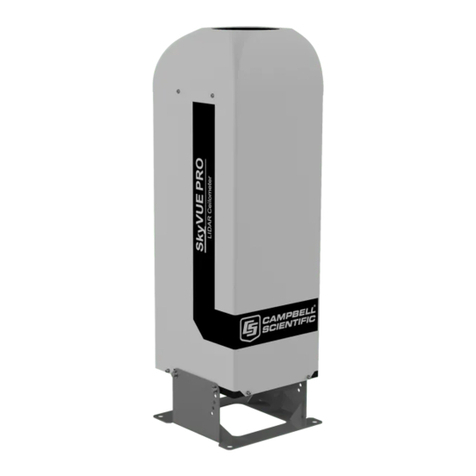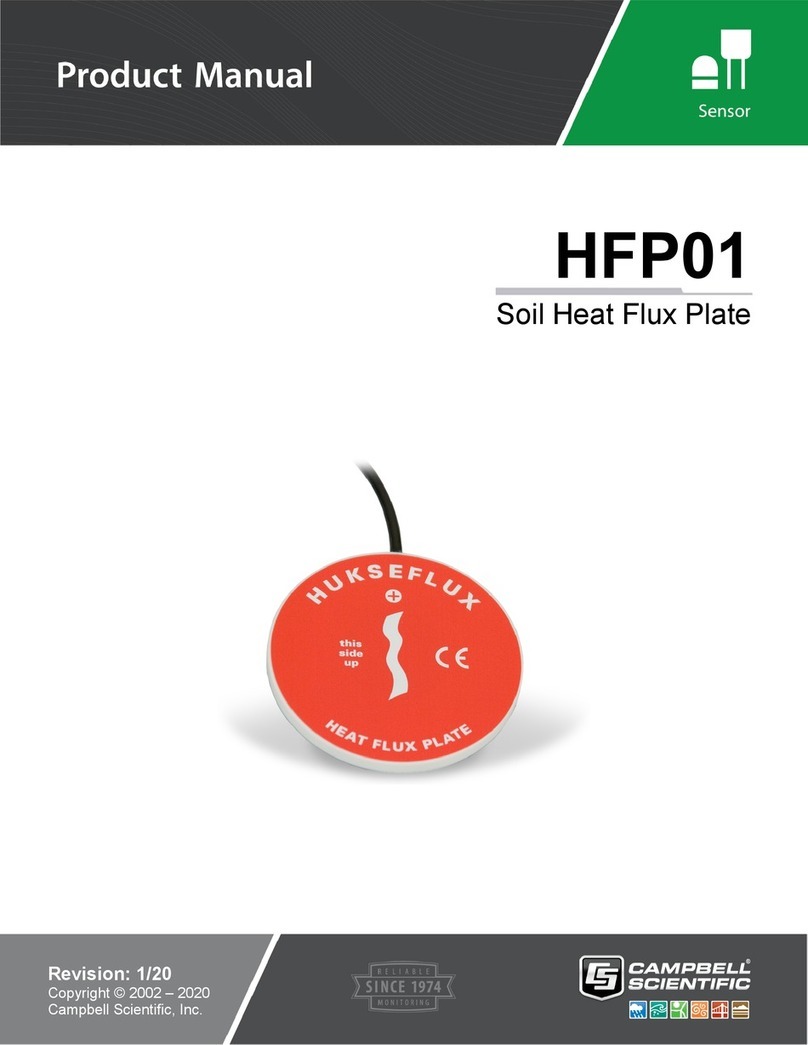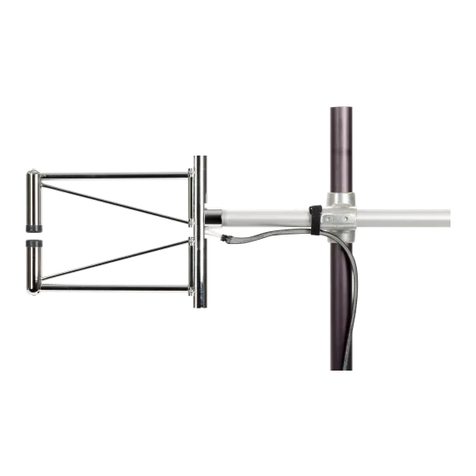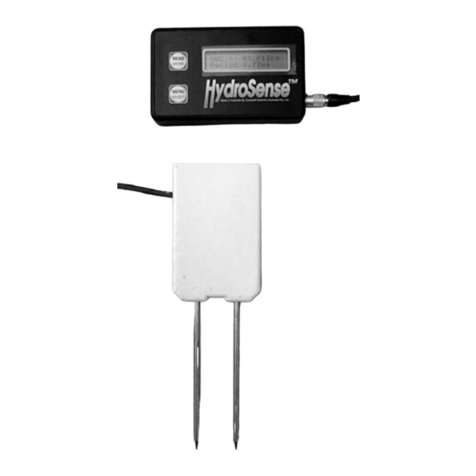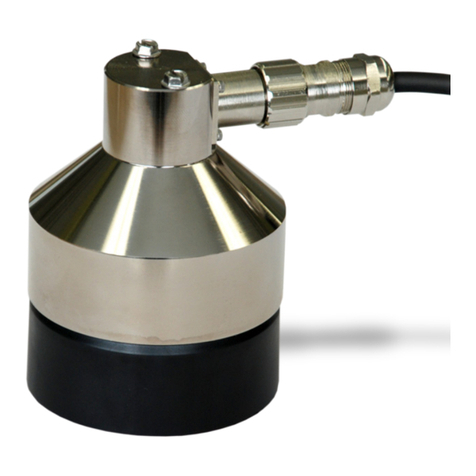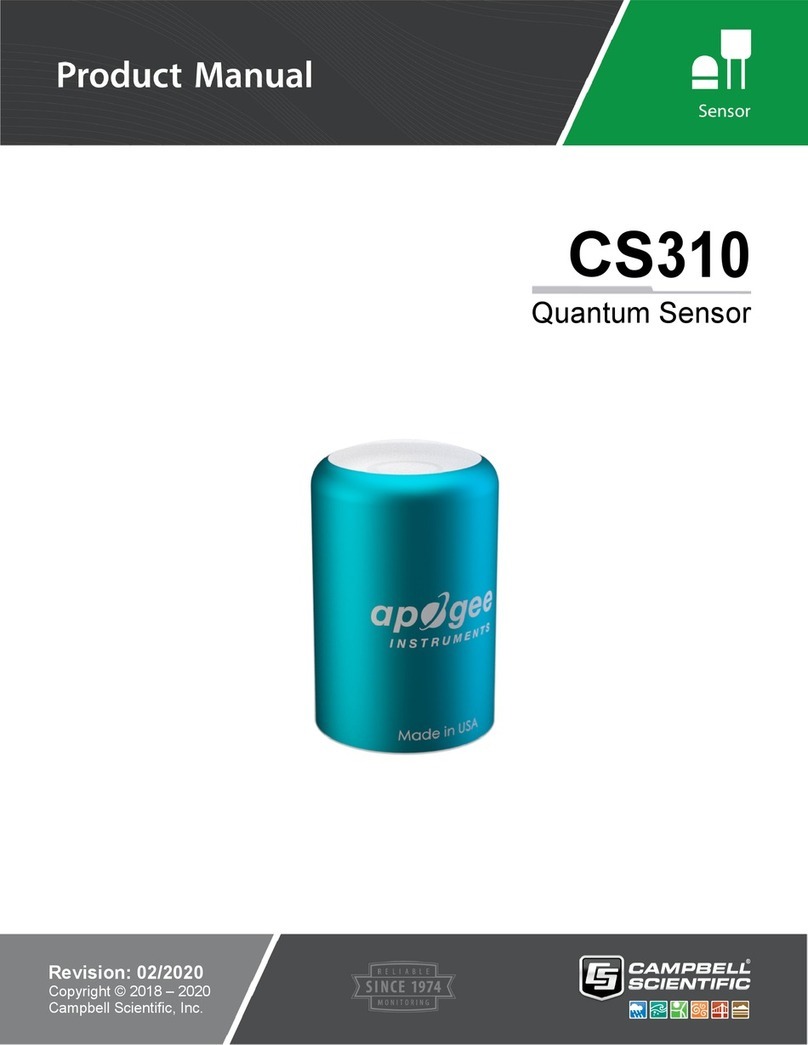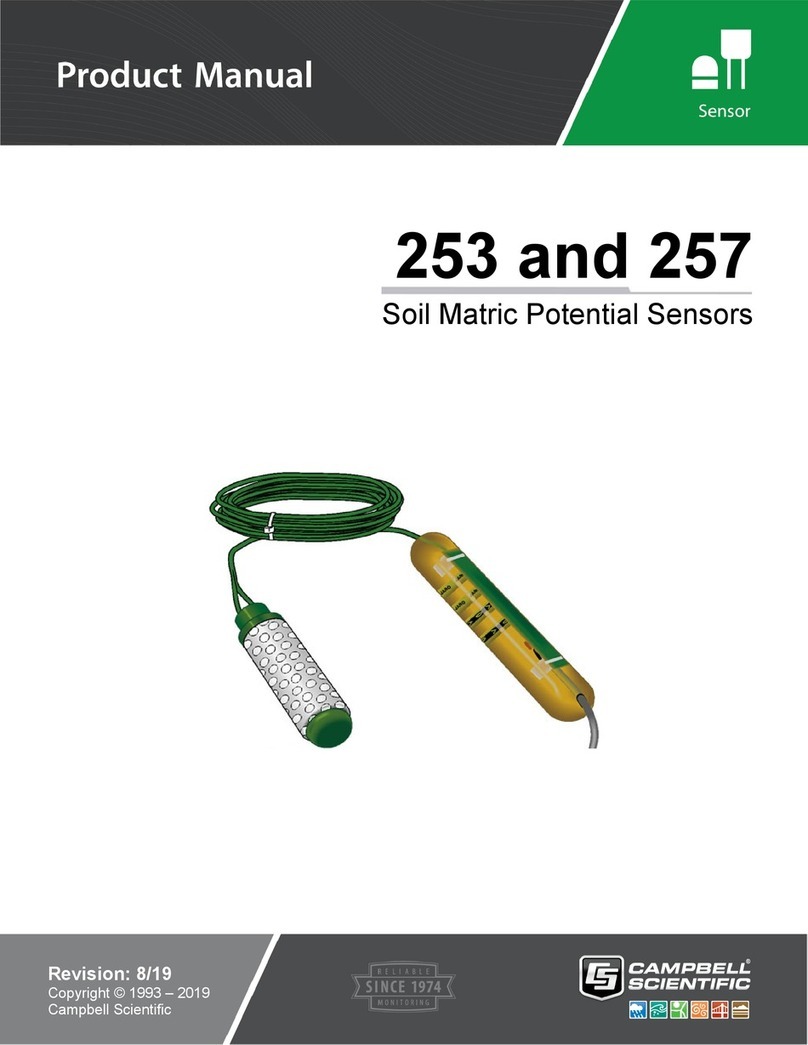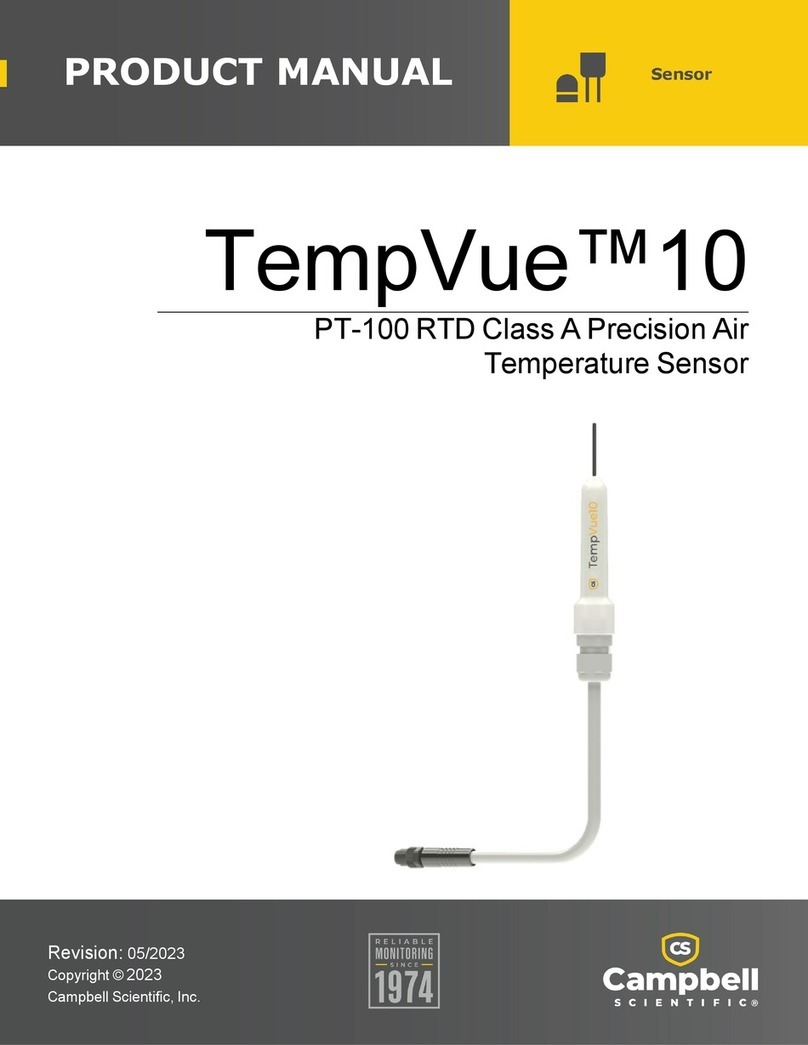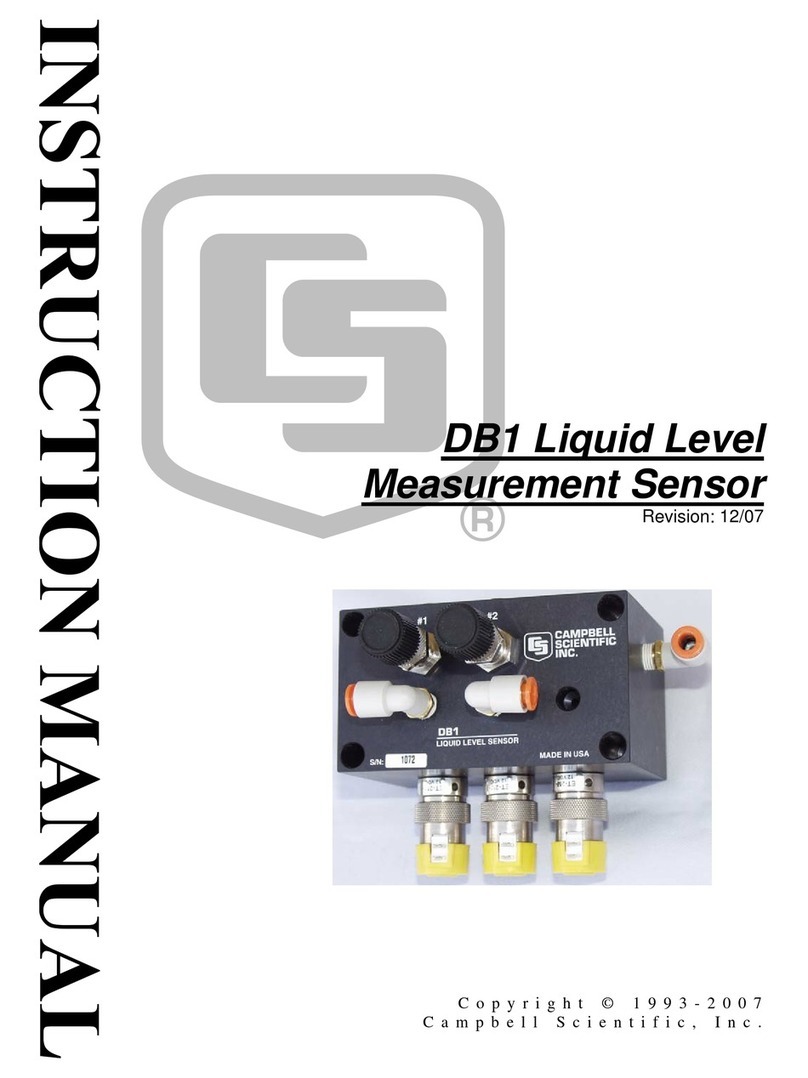
4. Pour fresh electrolyte in the bottom cap and fill to the top of the cap.
5. Keep the sensor upright with the cable pointed upwards (not sideways). Screw the bottom
cap onto the upper body until hand tight.
7.2 Wiring
Data logger connection is provided in following table. The CS511 can use one differential terminal
or one single-ended terminal. Differential wiring is better at rejecting electrical noise and ground
loop error.
Table 7-1: Wire color, function, and data logger connections
Wire
color Wire function Differential
data logger connection
Single-ended
data logger connection
White Signal high
Uconfigured for differential
input1,DIFF H (differential high,
analog-voltage input)
Uconfigured for single-ended
input1,SE (single-ended, analog-
voltage input)
Black Signal reference
Uconfigured for differential
input1,DIFF L (differential low,
analog-voltage input)
⏚(analog ground)
Clear Shield ⏚(analog ground) ⏚(analog ground)
1Uterminals are automatically configured by the measurement instruction.
7.3 Programming
Short Cut is the best source for up-to-date programming code for Campbell Scientific data
loggers. If your data acquisition requirements are simple, you can probably create and maintain a
data logger program exclusively with Short Cut. If your data acquisition needs are more complex,
the files that Short Cut creates are a great source for programming code to start a new program
or add to an existing custom program.
NOTE:
Short Cut cannot edit programs after they are imported and edited in CRBasic Editor.
AShort Cut tutorial is available in QuickStart (p. 2). If you wish to import Short Cut code into
CRBasic Editor to create or add to a customized program, follow the procedure in Importing
Short Cut code into CRBasic Editor (p. 13). This document provides programming basics for
CRBasic data loggers. A complete program is provided in Example program (p. 14).
CS511 Dissolved Oxygen Sensor 8
